Cooking in the backcountry has many rewards. Below are six easy tips to up your cooking game for your next backcountry adventure.
1. Create a food spoilage timeline and meal plan around that.
Depending on the season and location where you’re traveling, some items that are usually refrigerated may last longer than expected in your packs. This may feel like a guessing game at first. Take notes on your trip menu when items are still good or start to go bad in order to inform future trips. We’ve all suffered the fate of discovering a rotten vegetable or block of cheese that got lost at the bottom of a food pack. Keep a record of what you’ve brought for each meal to help prevent spoilage.
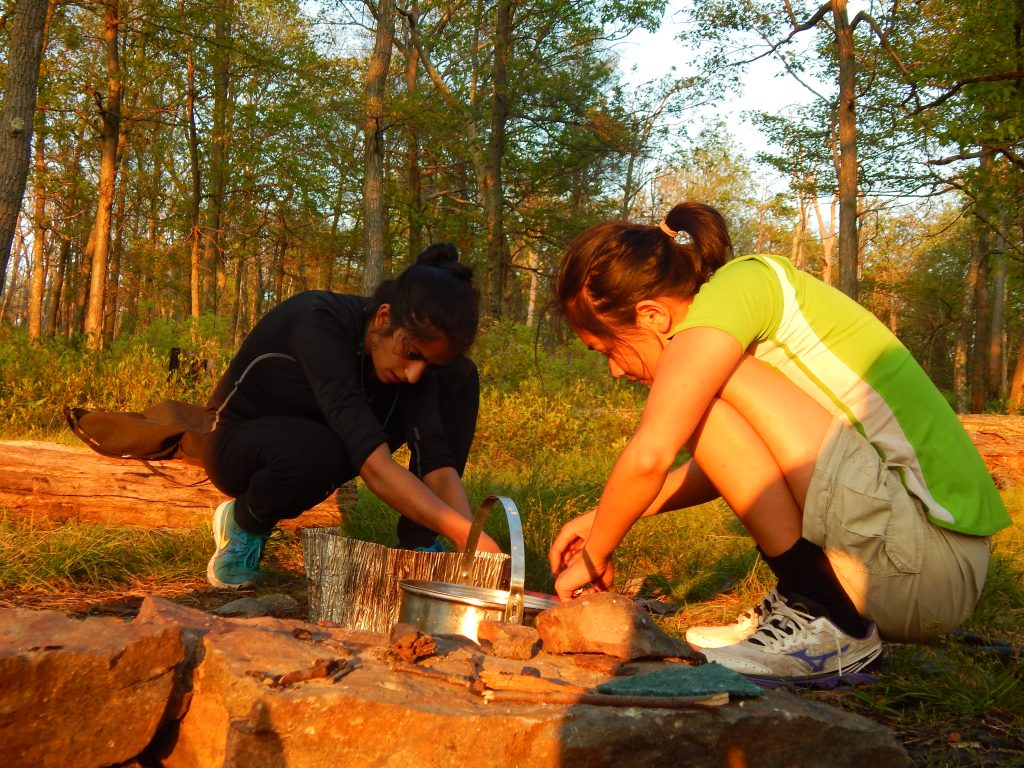
Take notes on your trip menu when items are still good or start to go bad in order to inform future trips. Photo by Kenja Griffin.
2. Moisture is the enemy of your fresh veggies.
Many sturdy veggies are capable of making it into week two or three with the proper care. Brown butcher paper will protect your vegetables much better than plastic bags. If you’ve ever noticed your fresh veggies sweating inside a bag on a hot day, you know they’ll soon be compost that you’re stuck packing out with your trash.
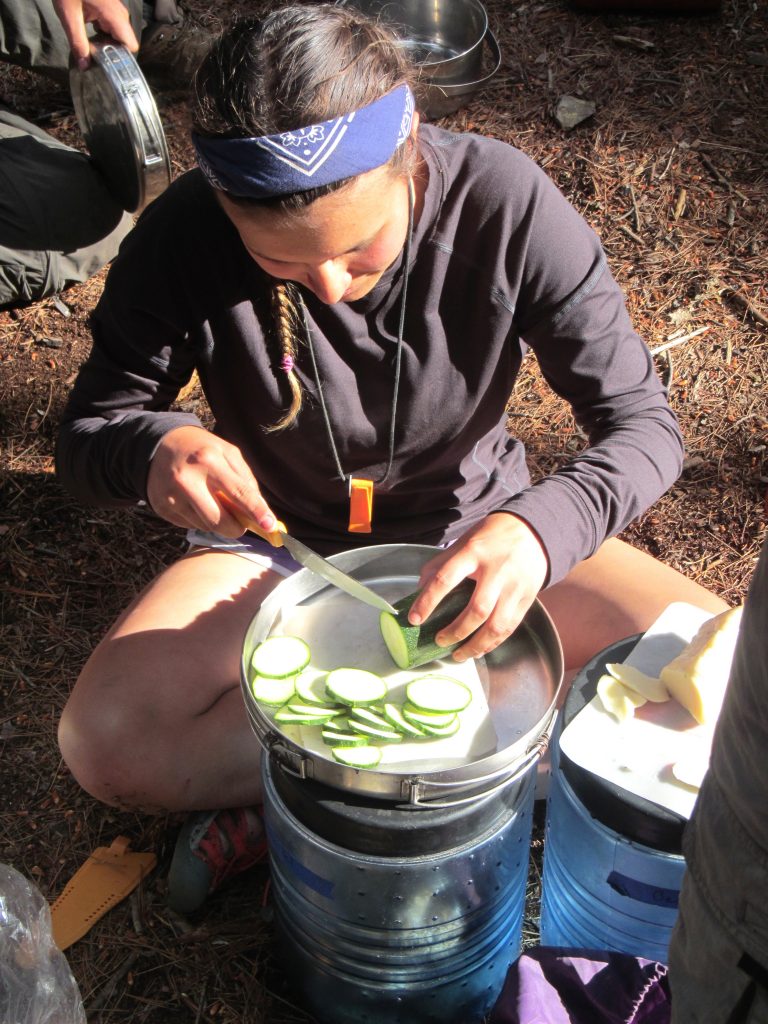
Brown butcher paper will protect your vegetables much better than plastic bags.
3. Variable heat is the key to varied food.
If you want to get beyond boiled dinners, whether you’re cooking over a camp stove or a fire, you’ll need the tools to vary the heat. Many camp stoves have only one setting: rocket engine. While this can be a great feature on a late night when you need your mac and cheese as soon as possible, or for making coffee before sunrise, it can turn attempts at frying, toasting and baking into burnt on the outside/raw on the inside messes.
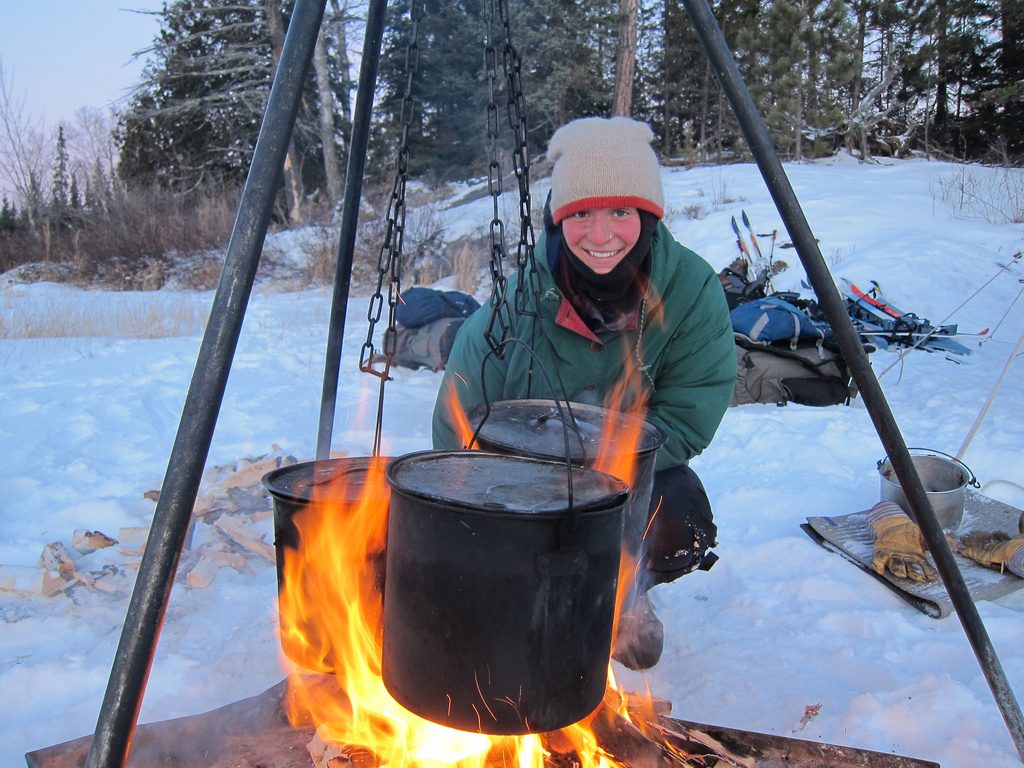
You’ll need the proper tools to vary heat when cooking different foods.
To solve this problem, I’ve used natural materials or my cooking utensils to build structures to keep my cooking pot up higher off of the flame. This allows more control over the temperature. When you’re cooking over a fire, a lightweight grate is great! I like to boil water first and then let the flames die down for frying and then baking. When baking over a fire, I use a rule of 30% of the heat from the bottom, and 70% from the top, building a twiggy fire on the lid. I usually cook the bottom first, and then the top. Backcountry baking is difficult enough without multi-tasking! I like to use a big metal spoon as a shovel for scooping coals out of the fire for the lid.
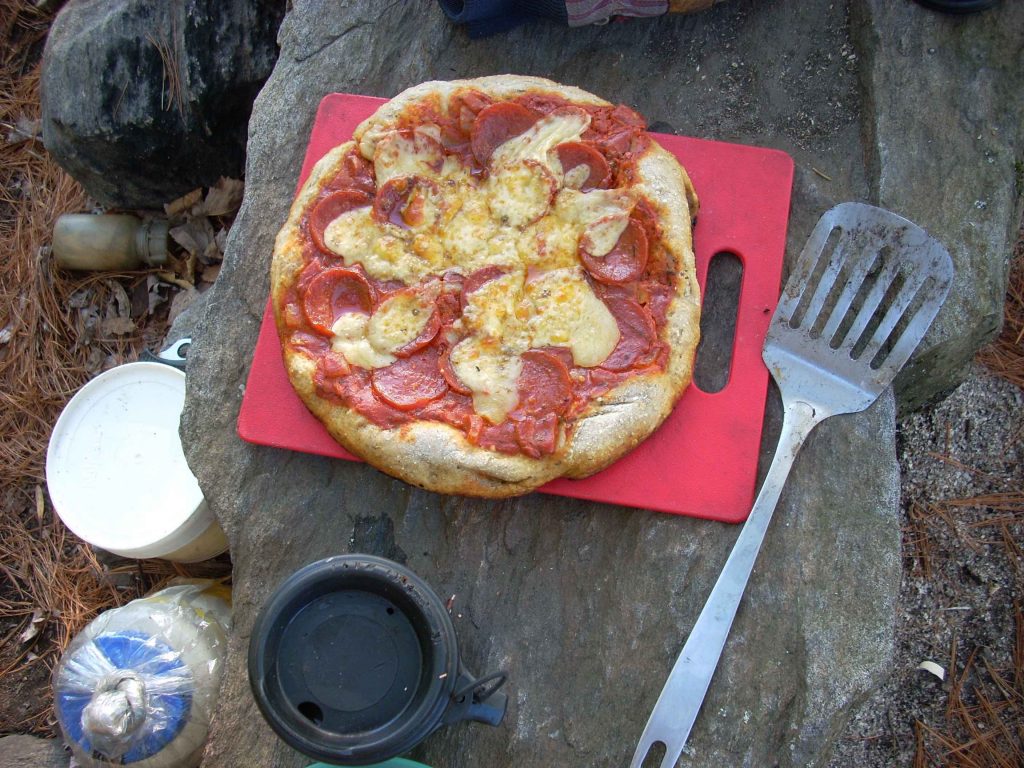
Photo courtesy of Renee Igo.
4. Be bold. If you can do it at home, you can probably do it in the woods!
Sprout, ferment, smoke… the sky is the limit. Instead of looking for recipes in special backcountry cookbooks, just take your favorite recipes from home and adapt them.
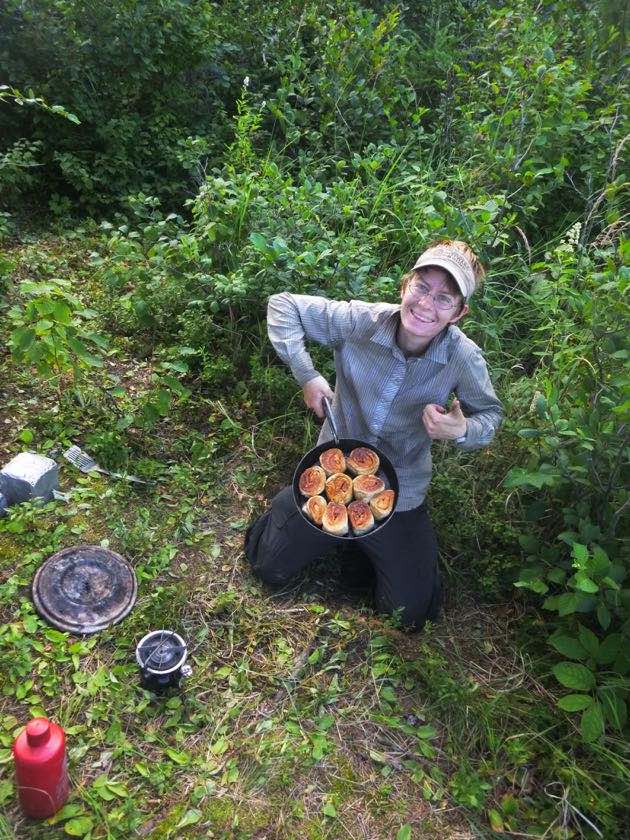
Get creative and adapt your favorite recipes from home. Photo courtesy of Renee Igo.
5. Use what you’ve got.
While you may be working with a limited range of kitchen tools, creativity can fill in some of the gaps. Need a rolling pin? Try your water bottle. Countertop or banquet table? Try an upside-down canoe. Fridge? Obviously snow or ice if it’s around, but I’ve also successfully kept fish fillets in a pot in the lake with a rock on top of it overnight. I’ve also inadvertently fed fish fillets to snapping turtles after getting overconfident with my fridge skills.
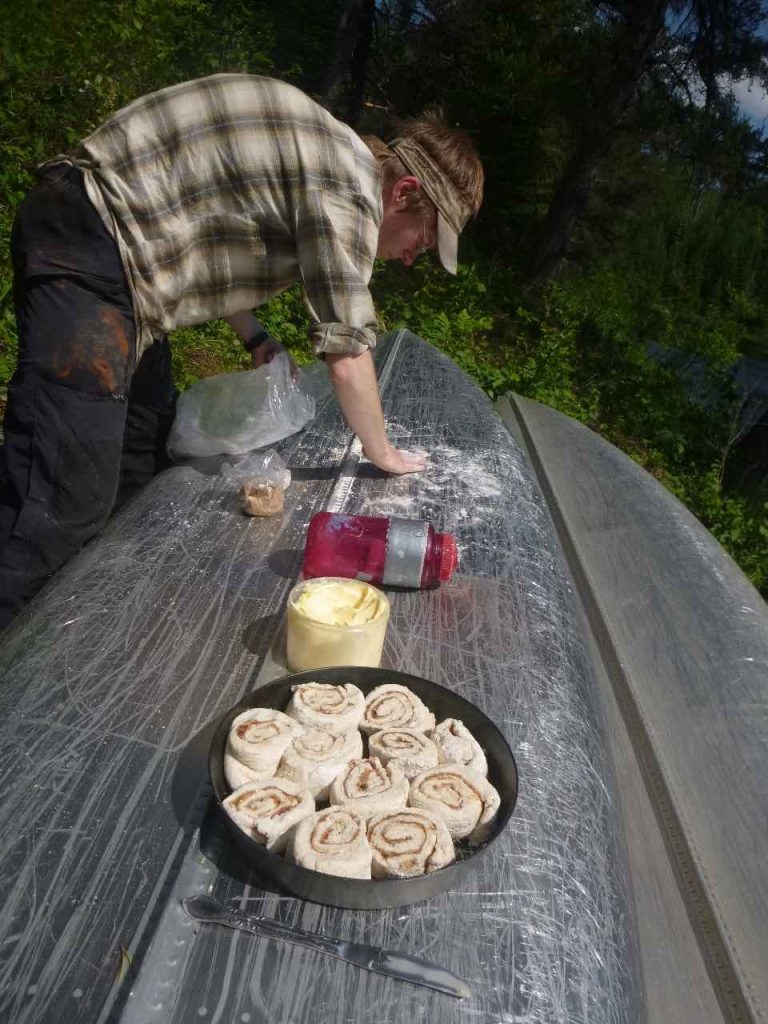
While you may be working with a limited range of kitchen tools, creativity can fill in some of the gaps. Photo courtesy of Renee Igo.
6. Don’t forget dessert!
Candy bars are fine for a snack when the campsite is suddenly three miles farther than you anticipated. For after dinner, try baking a cake, buns, making pudding or cheesecake from a mix or popping popcorn. Or bring pre-made cookies or granola bars.
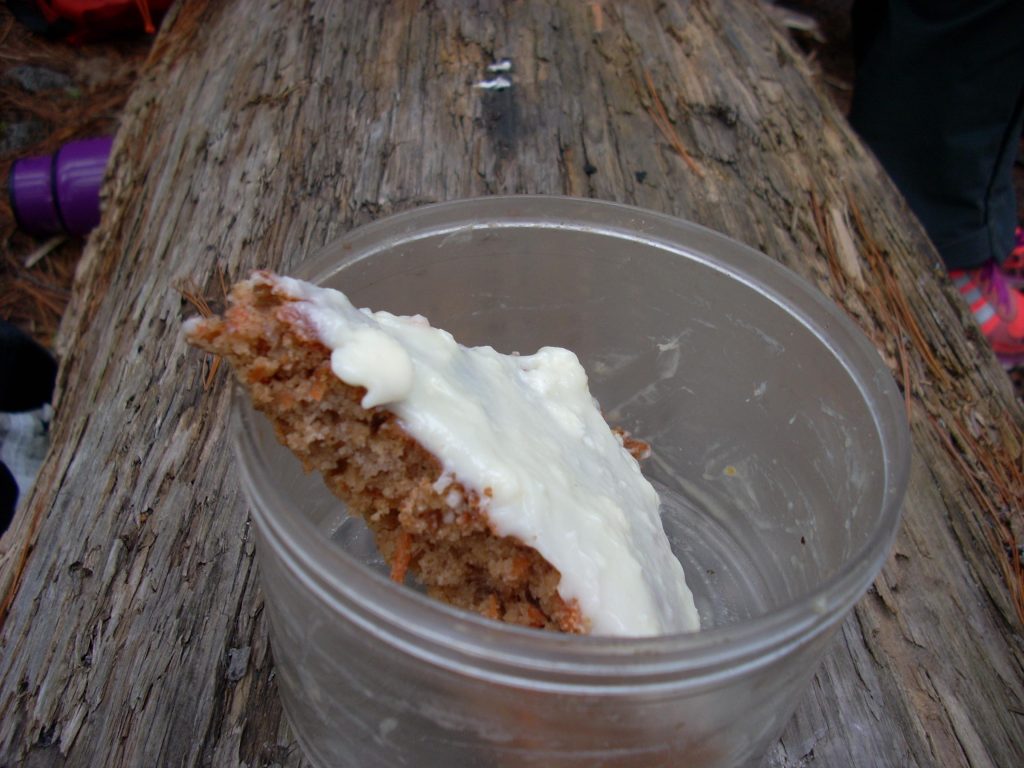
Bring pre-made cookies or granola bars for after-dinner dessert. Photo courtesy of Renee Igo.
Good food can cure homesickness, rainy day blues or tensions with teammates. Most importantly, it gives you the fuel to get where you’re going.
Master the art of backcountry cooking and you’ll have no shortage of folks excited to go camping with you!
About the Author
Renee Igo was an Outward Bound student at age 15, and has been instructing wilderness expeditions for the Voyageur Outward Bound School for the past eight years. When not instructing, she holds a variety of other teaching positions and raises sheep in Maine.




